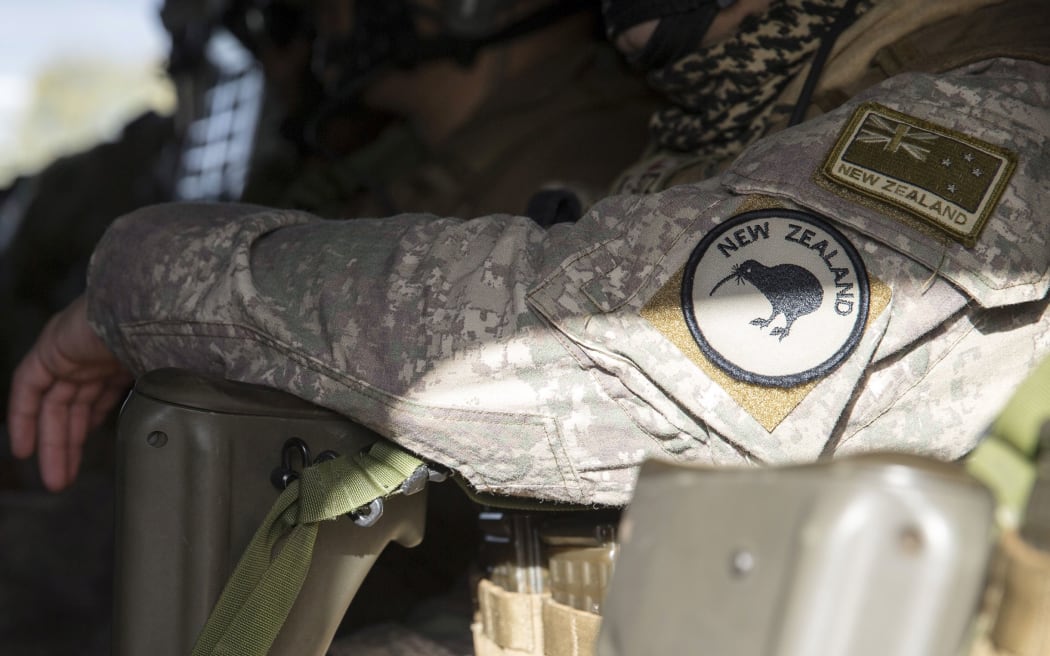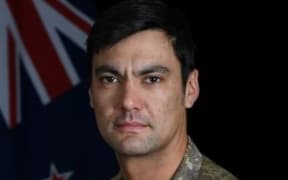A judge has rejected the New Zealand Defence Force's claim that a training exercise in which a decorated soldier died was exempt from health and safety laws.

File image. Photo: NZDF / Supplied
This is in part because the training couldn't be deemed "operational" because it used US Black Hawk helicopters, which the New Zealand army does not normally have access to. The Black Hawk helicopters would therefore be unavailable for the New Zealand Defence Force to use in response to a domestic incident.
Lance Corporal Nicholas Kahotea, a member of the SAS, died in May 2019 when he attempted to step out of one of these helicopters onto a roof as part of a training exercise with the US Armed Forces. Instead of stepping on to the roof, Kahotea fell eight metres from the helicopter onto concrete, and died in hospital shortly after.
After an investigation, WorkSafe prosecuted the the Defence Force (NZDF) under the Health and Safety at Work Act 2015.
In the Papakura District Court in June this year, the NZDF tried to have the charge dismissed. Much of the hearing was behind closed doors without the media present because it was dealing with restricted information that could prejudice national defence and security.
On Tuesday, Judge Richard McIlraith ordered a redacted version of the decision by Judge Jane Lovell-Smith be released.
She declined the NZDF application to throw out the charge, in part because the training exercise was not deemed sufficiently high-level enough to be exempt from health and safety law, and because it used helicopters not normally available to the NZDF for a domestic response.
'Defence Force sometimes exempt from health and safety laws'
The Health and Safety at Work Act (HWSA) does not apply to members of the defence force while the worker is carrying out "operational activities". The act does apply to day-to-day NZDF activities.
Even though operational activities are usually real-life scenarios, the chief of defence can declare a training to be an "operational activity" and therefore to be exempt from the HWSA. They must do so in writing to the minister of defence. This is usually high-level or dangerous training intended to mirror realistic scenarios, and such declarations are very rare.
One of these declarations was made by the chief of defence 11 months prior to the incident. It said NZDF's "counter terrorism response" was an operational activity, and therefore any counter-terrorism response, and the training to enable such a response, was exempt from the law, Judge Lovell-Smith's ruling showed.
This declaration was in force at the time of the incident in which Kahotea died.
However the declaration only covered specific training - technically called "an operational level of capability" or OLOC.
NZDF claimed the training was to achieve OLOC; WorkSafe disputed that. This was the critical decision for the Judge: whether this specific training exercise was to achieve OLOC.
Lesser levels of capability, including a basic level of capability (BLOC) or a directed level of capability (DLOC), are not covered by the declaration and therefore not exempt from the HSWA. An activity's only exempt from the HSWA if it is determined to achieve OLOC.
WorkSafe: 'Exercise wasn't to achieve OLOC'
In WorkSafe's submission, which was ultimately accepted by the judge, the documents prepared ahead of the exercise (the "Exercise Instructions") do not specifically mention "operational level of capability" (OLOC).
In fact, WorkSafe said, the documents do specifically mention the lower-level DLOC, or directed level of capability.
"DLOC means "directed level of capability" and is a lower standard of readiness than OLOC which demonstrates that the training exercise was not for the purpose of achieving OLOC."
Another NZDF document prepared ahead of the exercise, the Operational Order, states: "The purpose of the exercise was "to prepare and deliver immediate readiness forces to conduct special operations in support of national objectives".
"WorkSafe acknowledges that the Operational Order refers to "immediate readiness". NZDF maintains it is a reference to OLOC. There is no specific reference to OLOC in the preparatory materials but there is a specific reference to DLOC which confirms what was intended," submissions from WorkSafe in the ruling said.
NZDF said this specific SAS unit needed to constantly be at OLOC, so much if not all of their training needed to be at that level.
"NZDF argues that it is not necessary to specify that the readiness level intended was OLOC, because the relevant unit was always required to be at OLOC for responding to a terrorism incident.
"The exercise that evening was training to respond to counter terrorism threats and to ensure OLOC is achieved. In NZDF's submission there has been no evidence to refute that."
Training used helicopters NZDF doesn't have ready access to
The training was using US Armed Forces' Black Hawk helicopters, for what's called a bump landing. The helicopter hovers at the edge of a building while those on board exit onto the rooftop of the building. During this exercise, Kahotea fell eight metres from the helicopter and died from his injuries.
WorkSafe said that "bump landing" skills have never been a requirement of meeting OLOC (operational level of capability) because it is not possible to do with the type of helicopters the NZDF uses.
"If NZDF was required to respond urgently to a domestic terrorism incident, it would not do so using Black Hawk helicopters. Learning to do or practising a bump exercise is not something that the NZDF operators would need to do in order to achieve or maintain OLOC to respond in a domestic terrorism situation," WorkSafe said.
Judge Jane Lovell-Smith agreed with WorkSafe, and declined the NZDF application to have the charges dismissed.
"NZDF submitted that this training was intended to achieve an operational level of capability. However, I accept WorkSafe's submission that ... the exercise was intended to achieve a directed level of capability," her ruling said.
The initial version of the declaration referred to "counter terrorism response inside New Zealand", rather than a foreign mission.
"This supports the view that the Declaration issue in this case was specifically intended to refer to domestic Counter Terrorism Response activities," Judge Lovell-Smith wrote, rather than training for offshore mission, such as with the US Armed Forces where these helicopters may be in use.
"I accept WorkSafe's submission that the Declaration was not intended to and did not apply to the training exercise in issue here, which was not undertaken for the purpose of achieving OLOC for counter terrorism operations. HSWA applies to the exercise and the Declaration has excluded this particular training exercise from the ambit of this statute.
"HSWA applies to the training exercise in issue in this case. The application by NZDF for dismissal of the charge is declined," the Judge wrote.
The case is back in court in December.



